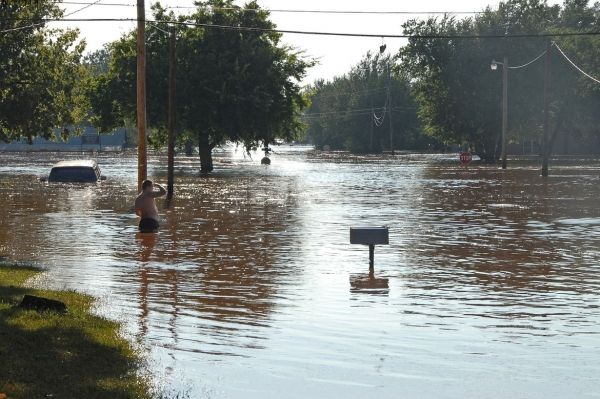Across the continental United States, massive, often-devastating precipitation events — the kind that climate scientists have long called “hundred-year storms” — could become three times more likely and 20% more severe by 2079, UCLA-led research projects.
That’s what would happen in a scenario in which greenhouse gas emissions continue to increase at a rapid rate — what the paper calls a high-warming scenario. Extreme rainfall events, the so-called hundred-year storms, would then be likely to occur once every 33 years.
The paper, published in the American Geophysical Union journal Earth’s Future, finds that warming has a more profound effect on both the severity and frequency of extreme precipitation events than it does on common precipitation events.
The findings have serious implications for how we prepare for the future, UCLA climate scientist Daniel Swain said.
Continue reading at UCLA.
Image via Marvin Nauman/FEMA.


